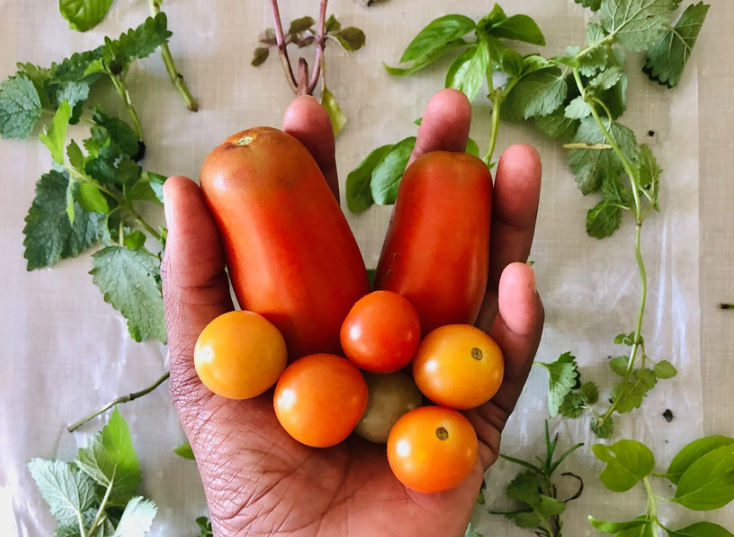
The smell of garden tomatoes is absolutely euphoric if you are a fan of fresh, juicy tomatoes. Over the past two years of my gardening journey, I have perfected my approach to growing organic tomatoes. So, I have created 8 tried and true tips that will help you start planting tomatoes in your garden!
Chakayla’s Tomato Planting Guide: 8 Tips for Success!

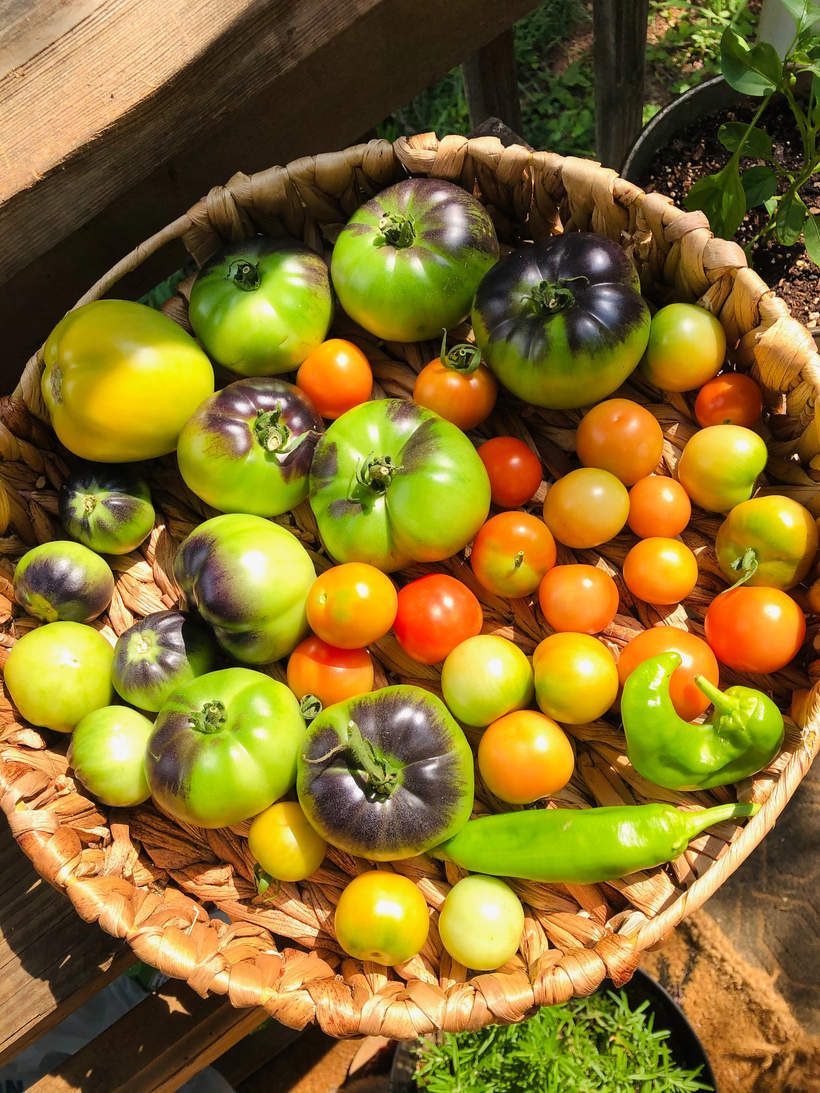
1. Start Early: No matter if you enjoy starting your tomatoes from seeds or purchasing transplants, you will still end up with an abundant harvest when getting them acclimated and planted early. When temperatures increase, ideally between 55-85 degrees Fahrenheit, this is great timing to plant. When planting tomatoes, plant where they can get plenty of sun (6-8 hours is ideal), direct watering toward their roots, and stake tomatoes to encourage them to grow upwards.
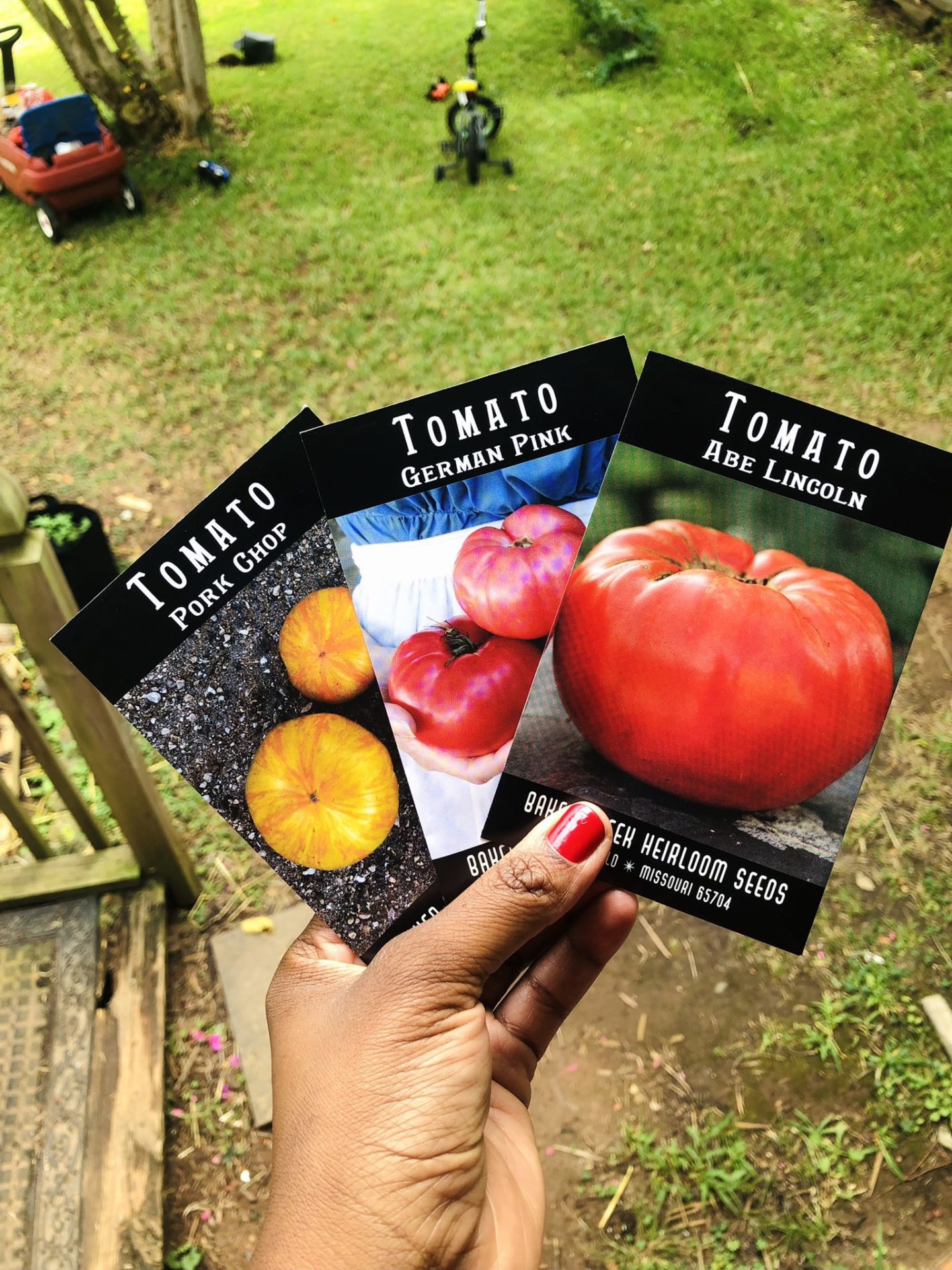
2. Routinely Fertilize: Tomatoes are heavy feeders, which means these hearty plants require a lot of healthy nutrients to thrive and produce plenty of fruit. Providing nourishment for your tomatoes should begin when they’re planted and then routinely throughout the growing season. Aim to fertilize your tomatoes every 2 weeks with your preferred liquid fertilizer. Providing nourishment for your tomatoes will help prevent transplant shock, strengthen their root systems, and grow larger,tastier fruit.
3. Indeterminate vs Determinate: Tomatoes need a lot of room to grow, so gardeners with smaller spaces should consider the type of varieties they want to grow beforehand. Tomatoes can either be determinate, plants that have a fixed mature height (some examples include dwarf tomatoes like Tiny Tim); or they can be indeterminate, plants that continue to grow and sprawl for as long as you allow them (some examples include varieties like Cherokee Purple). When you know this information, you can start planting and staking accordingly. To save space consider growing your tomatoes up on trellises, stakes, or along fences.
4. Keep Your Tomatoes Tidy: If you let your tomatoes run wild and free, you may get plenty of fruit (and pests). Keeping the plant’s side shoots pruned will ensure you are helping your plant redirect its energy toward pushing out more flowers, which will get you more fruit. Pruning will also help with pest search and destroy efforts.

5. Pick Tomatoes at “First Blush”: Let’s face it, there are plenty of pests and animals who love snacking on tomatoes of all colors and sizes. Caterpillars (in particular) love tomatoes so as soon as they start turning color, pick them from the vine and have them ripen on your kitchen counter. Did you know that tomatoes continue to ripen, even when picked off the vine? Don’t be afraid to harvest your green tomatoes.
6. The More You Pick: The more prolific your harvests will be! Don’t be afraid to pick your weight in tomatoes because they will grow back in 1-3 weeks.
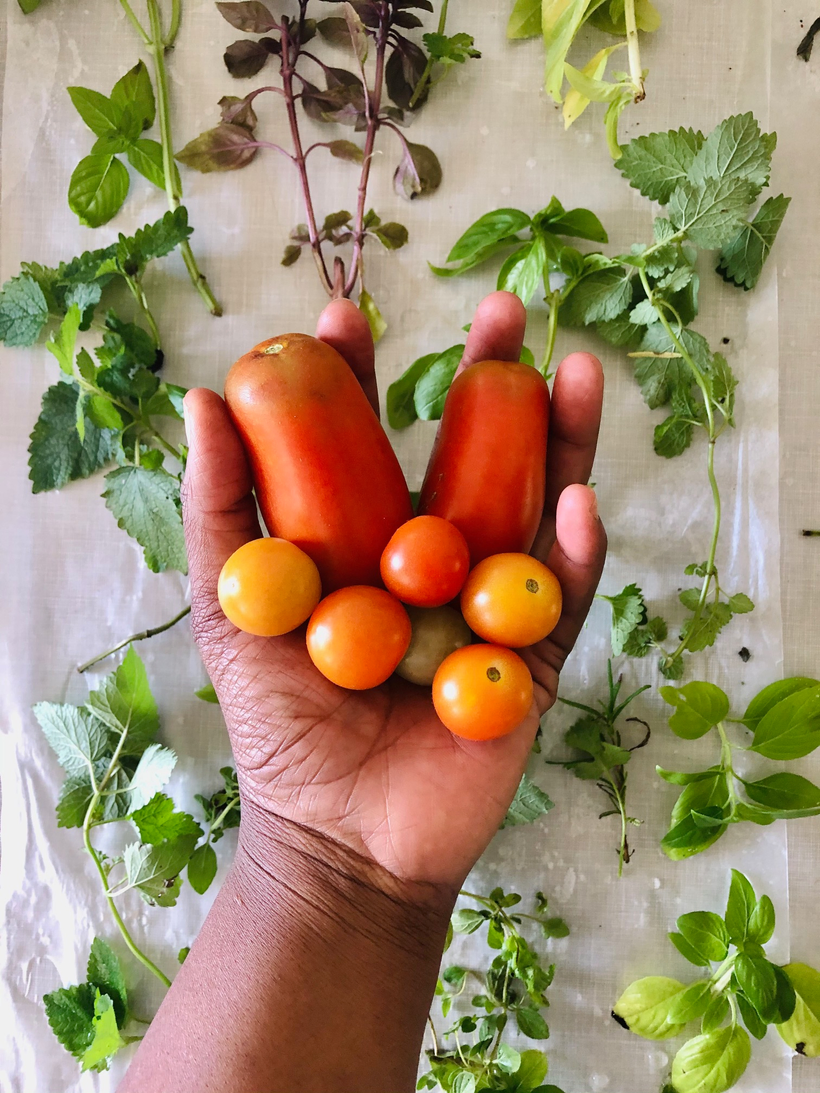
7. Plant Tomatoes with Companion Herbs + Vegetables: Companion planting is the practice of growing plants together that help prevent pests, improve flavor or provide plant support (beans growing up corn stalks for support, for example). In my tomato beds this summer, I planted several varieties of basil, marigold flowers, nasturtiums, chamomile, sage, thyme, and peppers.
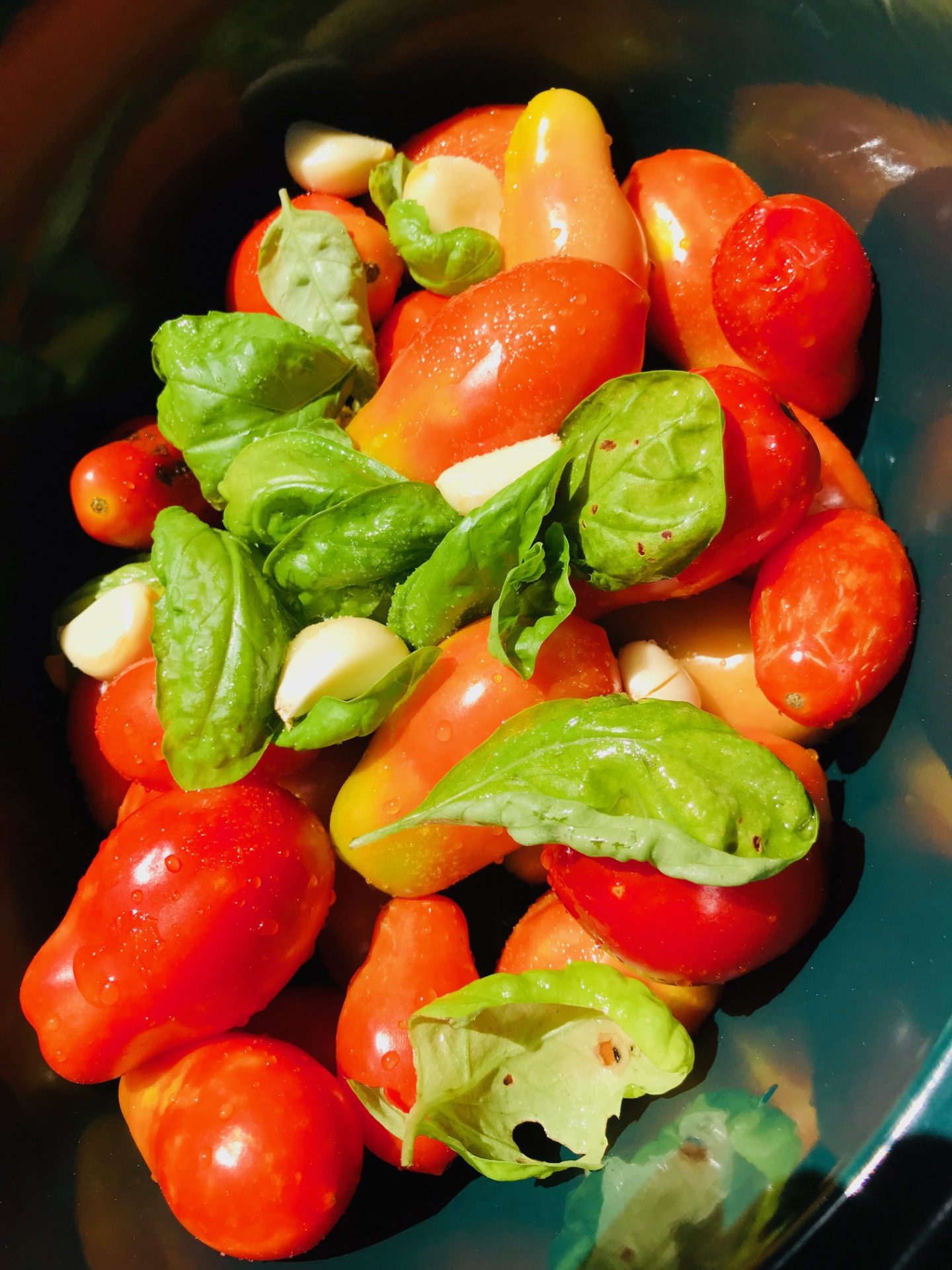
8. 10 Minutes a Day: Love on your garden as much as you can! The more love that you pour into your garden, the more food that it will give you. Walking your garden, monitoring potential pests issues, and ensuring the soil gets plenty of water and your tomatoes are staked properly, will help you save more time and fewer heartaches this summer.































































